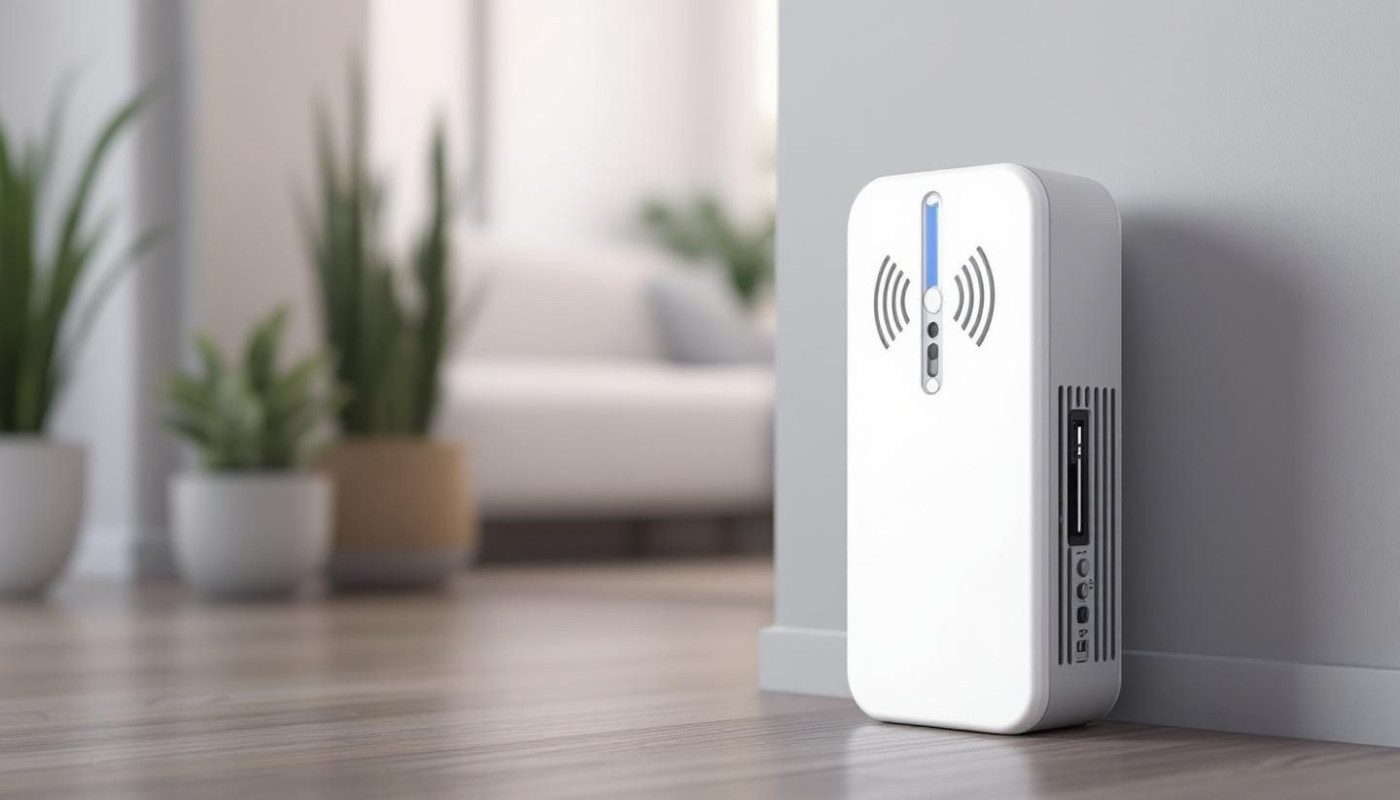Table of contents
Ultrasonic pest repellers have gained popularity as a modern solution for keeping unwanted critters at bay, but questions remain about how effective these devices truly are. This topic continues to spark debate among homeowners and pest control experts alike. Dive into the following sections to uncover the science, real-world performance, and key considerations that determine whether ultrasonic pest repellers are right for you.
Understanding ultrasonic technology
Ultrasonic pest repellers operate on the premise of emitting high-frequency sound waves that are typically above the auditory threshold of humans and most household pets. These sound waves, usually within a frequency range of 20 kHz to 65 kHz, serve as the core component of pest deterrent technology. Most pests, such as rodents and various insect species, perceive these ultrasonic signals as highly disruptive, causing them discomfort or interfering with their natural behaviors such as communication, foraging, and nesting. This is the fundamental mechanism behind how ultrasonic repellers work, utilizing electronic pest control methods to create an inhospitable environment for unwanted creatures without resorting to chemicals or traps. While humans and common domestic animals do not detect these frequencies, the sensitivity of rodents and insects to specific ranges ensures that only target species are affected, making ultrasonic pest repellers a discreet and convenient option for those seeking non-toxic pest management solutions.
Evaluating scientific evidence
Recent ultrasonic pest repeller studies have yielded mixed outcomes regarding the effectiveness of ultrasonic devices in practical pest control. Scientific evidence pest control efforts rely heavily on double-blind study protocols, allowing university research scientists to minimize bias during laboratory pest testing. Independent pest research conducted by institutions such as the US Environmental Protection Agency and various academic laboratories indicates that while some ultrasonic devices may temporarily disrupt the activity of rodents or insects, many tests fail to demonstrate consistent, significant reductions in infestation levels. Some studies observe short-term avoidance behavior in pests when exposed to specific ultrasonic frequencies, but these effects often diminish as pests become habituated.
Laboratory pest testing further reveals that variations in device frequency, power, and room acoustics can dramatically influence outcomes, making real-world applications unreliable. Independent researchers have also highlighted that the majority of commercial ultrasonic pest repellers lack standardized performance criteria, complicating consumer evaluation. Despite these challenges, ongoing advancements in engineering and behavioral science suggest potential improvements in future device design. For readers seeking models with promising laboratory results or more details on the current state of scientific evidence pest control, it is advisable to look at this site for additional resources and product evaluations.
Real-world user experiences
User experiences pest control efforts with ultrasonic pest repellers reveal a diverse landscape of customer feedback ultrasonic devices. Analyzing ultrasonic pest repeller reviews, it becomes clear that subjective assessment plays a major role in determining perceived pest repeller effectiveness. Homeowners often report varying levels of satisfaction depending on factors such as the size of the room, the layout of their home, and the type of pest species targeted. For instance, some individuals have found these devices to be suitable home pest solutions for rodents in confined areas, while others dealing with insects like cockroaches or ants report limited improvement.
Businesses and tenants provide a wealth of insights in ultrasonic pest repeller reviews, frequently highlighting that the effectiveness of these units is not universal. Many positive reports emerge from users in smaller apartments or single rooms, where a concentrated sound field seems to discourage pests. Yet, larger or multi-room environments often see mixed results, suggesting that sound dissipation limits coverage. Furthermore, species-specific responses are repeatedly mentioned in customer feedback ultrasonic devices; some pests appear more resistant to ultrasonic frequencies, which can influence overall pest repeller effectiveness perceived by the user.
Patterns in user experiences pest control also suggest that expectations play a significant role in subjective assessment. Those expecting a complete eradication of pests may be disappointed, while others who seek a reduction and supplement the devices with traditional methods often express greater satisfaction. This distinction is emphasized in many ultrasonic pest repeller reviews where individuals combine these devices with physical barriers or sanitation improvements. Ultimately, while real-world feedback underscores a range of outcomes, it highlights the necessity for consumers to match their home pest solutions strategy to their unique environment and pest problem.
Potential limitations and challenges
Ultrasonic pest repellers face several pest repeller drawbacks that consumers should be aware of before incorporating them into electronic pest management strategies. A primary concern is wave attenuation, which refers to the weakening of ultrasonic sound waves as they pass through obstacles like walls, furniture, and dense building materials. This limitation often results in a reduced effective range, causing uneven coverage and leaving some areas unprotected. Additionally, ultrasonic repeller limitations become evident when considering the varied sensitivity of pests; certain insects or rodents may be less affected by ultrasonic frequencies, leading to inconsistent results across different pest types. Factors such as the layout and materials of a building also influence how well these devices perform, presenting significant pest control challenges for those seeking comprehensive protection.
Ultrasonic device safety is another area requiring careful attention, especially in households with pets or sensitive individuals. While most studies indicate that these devices are generally safe for humans, some pets, particularly rodents or small mammals, may experience distress due to the emitted frequencies. In rare cases, individuals with specific auditory sensitivities might also notice discomfort. Responsible use involves monitoring the environment for any adverse reactions and ensuring devices are not placed in locations where vulnerable pets spend significant time. Weighing the pest repeller drawbacks and pest control challenges alongside user safety helps inform a balanced approach to integrating electronic pest management solutions.
Best practices and recommendations
Maximizing pest repeller performance begins with strategic device placement. Position ultrasonic units in open, unobstructed areas where sound waves can disperse freely, as obstacles like furniture or curtains may weaken their reach. For effective pest management, devices should be installed at the height relevant to the target pest—higher for flying insects and lower for rodents or crawling insects. Regular maintenance, including dusting and occasional testing, supports consistent output, enhancing home pest prevention efforts.
Ultrasonic pest control tips often highlight the benefit of combining pest control methods for best results. Integrating repellers with traditional approaches—such as sealing entry points, maintaining cleanliness, and using traps—creates a robust, layered defense. In larger or highly infested spaces, consider multiple devices to cover all areas, reducing pest migration to untreated zones. The integrated pest management model recommends adapting techniques to specific environments and problems, using ultrasonic devices as part of a comprehensive solution rather than a standalone fix. Following these steps ensures effective pest management across varied settings.
Similar




